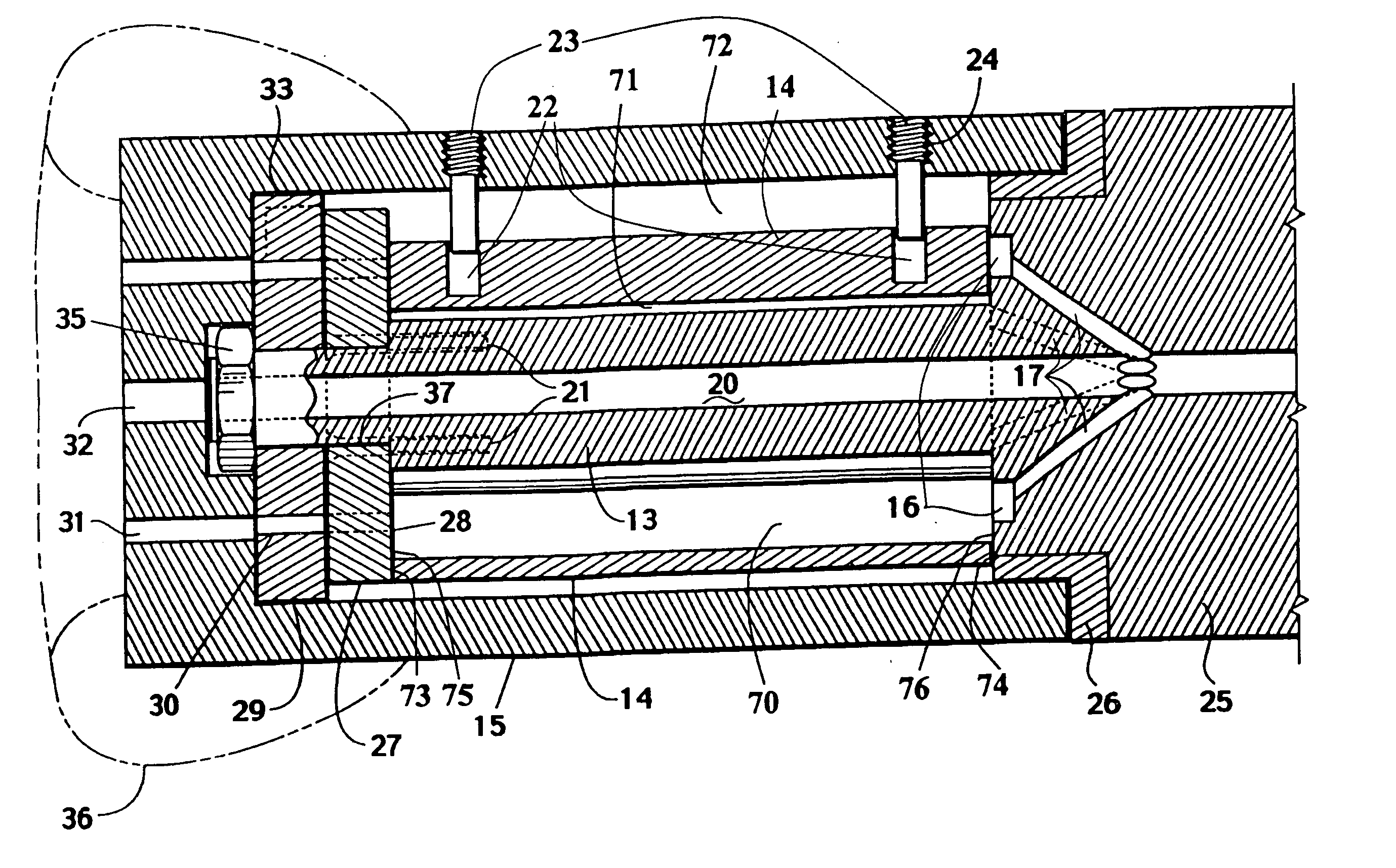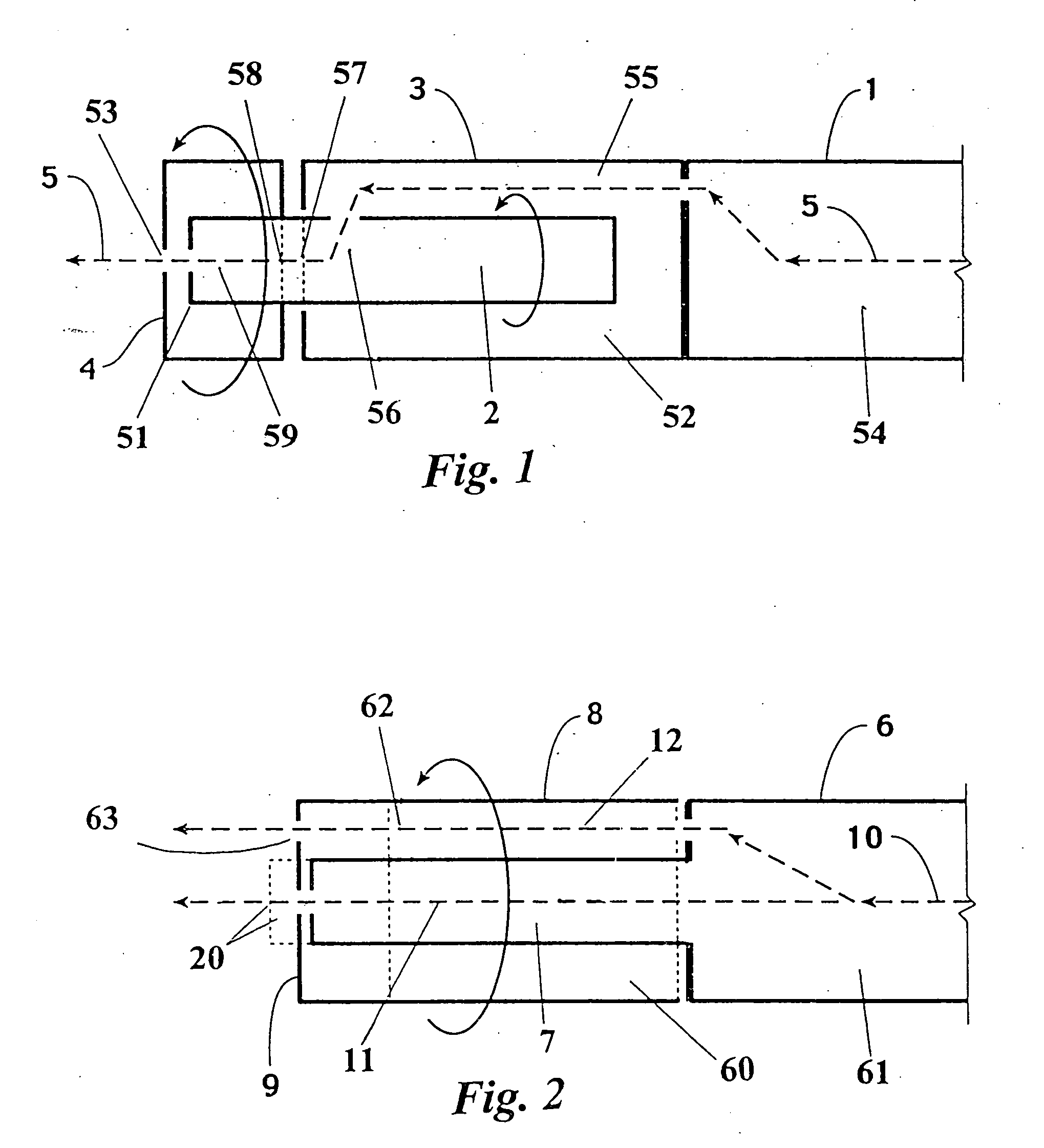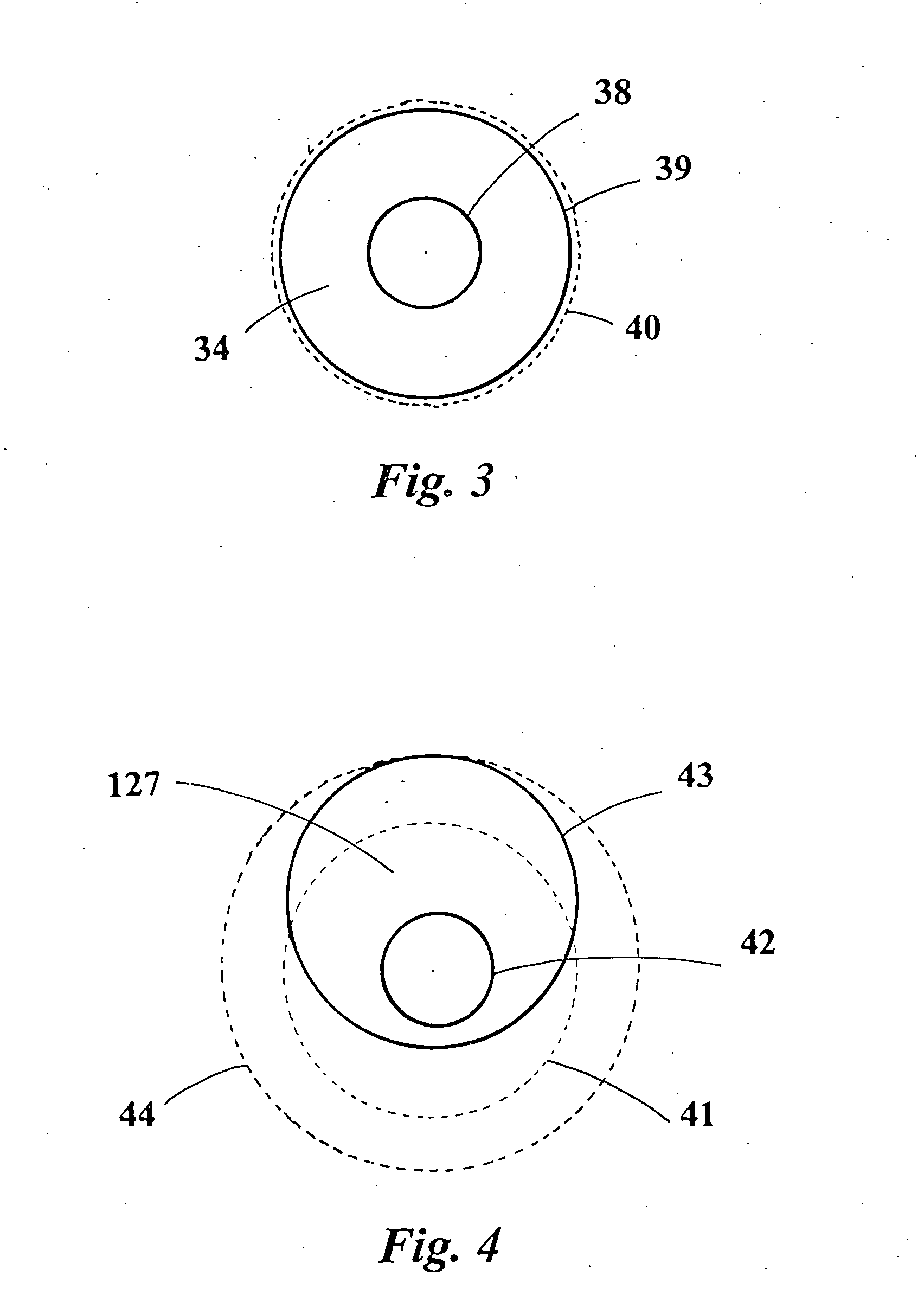Inverted motor for drilling rocks, soils and man-made materials and for re-entry and cleanout of existing wellbores and pipes
a technology of inverter motors and drilling wells, applied in the field of motors, can solve the problems of fluid “by-pass” capability through the motor to the lead bit/drilling utensils, is not available to the industry via the technology of contemporary art, and achieves the effect of smooth power generation
- Summary
- Abstract
- Description
- Claims
- Application Information
AI Technical Summary
Benefits of technology
Problems solved by technology
Method used
Image
Examples
Embodiment Construction
[0080]FIG. 1 is a simplified longitudinal cross-section drawing of a typical motor currently used in the contemporary art. In this illustration, a motor housing 3 is affixed to and does not move relative to a motor base 1. Said motor base 1 is attached to a hollow tubular drill string. A rotary motor 52 is positioned between said fixed motor housing 3 and a free floating motor shaft 2, causing the shaft 2 to rotate whenever the motor 52 is actuated. A tool / bit 4 is attached to the shaft end 51 that extends out of motor housing 3 and rotates with the shaft 2. Fluid (liquid and / or gas) down flows along path 5 through the internal portion 54 of motor base 1, into a cavity 55 of the rotary motor located between the housing 3 and shaft 2, powering and transversing the motor 52, and crossing over into an interior portion 56 of the motor shaft 2, through a shaft center hole 57 and a tool bit flow channel 58, into a tool bit center hole 59 and exiting via a tool / bit-end opening 53.
[0081]FI...
PUM
 Login to View More
Login to View More Abstract
Description
Claims
Application Information
 Login to View More
Login to View More - R&D
- Intellectual Property
- Life Sciences
- Materials
- Tech Scout
- Unparalleled Data Quality
- Higher Quality Content
- 60% Fewer Hallucinations
Browse by: Latest US Patents, China's latest patents, Technical Efficacy Thesaurus, Application Domain, Technology Topic, Popular Technical Reports.
© 2025 PatSnap. All rights reserved.Legal|Privacy policy|Modern Slavery Act Transparency Statement|Sitemap|About US| Contact US: help@patsnap.com



